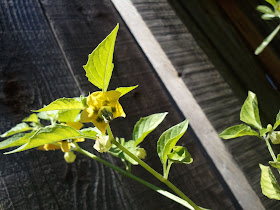My bush bean plants are producing a lot of beans---too much for us to consume so I have been freezing them for later use. To learn how to prepare green beans for freezing, see the photos and directions below.
How to Prepare Bush Beans for Freezing
Tools
- Scissors
- Knife
- 1 Sauce pan
- Colander (or slotted spoon if you do not have a strainer)
- 1 large bowl
- Freezer Bag
Directions
Step 1. Harvest your beans in the morning. I use scissors to snip the beans off the plant. You can harvest the beans at any size. I like the flavor and texture of medium size beans. Remove any debris by giving your beans a quick rinse under water.
Step 2. Boil a pot of water. Use enough water to cover the green beans. While you are waiting for the water to boil, prepare the green beans. Snip the pointy ends off the green beans (See Photo 1). You can stop here or if you rather have bite size pieces, slice the beans into 1 to 1 1/2-inch pieces (See Photo 2).
Photo 1
Photo 2
Step 3. Prepare another bowl filled with ice cold water.
Step 4. Pour your green beans into the water and boil your beans anywhere from 1 to 3 minutes. Then remove your beans from the boiling water, and immediately plunge them in the ice cold water. This will help preserve the green vibrant color and texture (Photo 3). Then drain the beans in a colander.
Photo 3
Step 5. You can either serve the green beans or store them in a freezer bag for freezing. If you choose to put them in a freezer bag, allow the beans to dry for about 5 minutes in the colander. The dryer the beans, the less likely they will stick together in the freezer bag. Then place them in a freezer bag. Remove as much air as possible from the bag to prevent freezer burn.
































